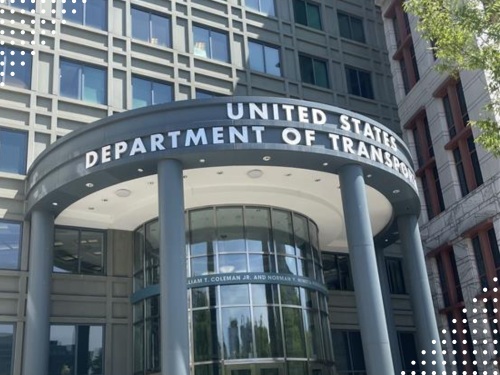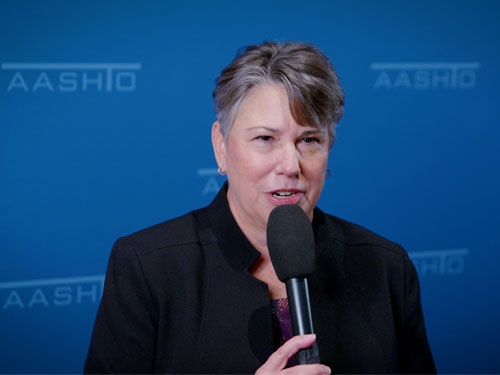The Colorado Department of Transportation and Front Range Community College are teaming up to develop what is believed to be a first-in-the-nation two-year associate’s degree in applied science or AAS as part of a highway maintenance management degree program.
[Above photo by Colorado DOT.]
The new degree program, which is scheduled to begin in January 2019, is geared for highway maintenance supervisors and those wishing to advance in the organization or to be better prepared for supervisory positions.
Although initiated by Colorado DOT’s division of highway maintenance, the program has been crafted with input from members of the American Public Works Association’s Colorado Chapter, leadership from the Colorado Local Technical Assistance Program, and leaders from a variety of local Colorado public works agencies.

Those groups said in a statement that demand for this degree is expected to be high. To give an idea of the potential within Colorado, there are approximately 8,000 public works employees responsible for road and bridge maintenance across all municipalities. If just 1 percent of incumbent workers were to enroll in the program, that would equate to 80 students from Colorado alone.
Realistically, it is predicted that 5 percent or more will enroll in the Highway Maintenance Management degree program eventually, equating to 400 students – a figure that does not even take into account young recruits or interest from other states, noted Robert McArthur with the Douglas County Public Works Department.
“It has become significantly apparent that the need to streamline highway maintenance management training is long overdue,” he explained in a statement. “From the beginning it was clear that this AAS degree program is the opportunity to funnel appropriate education and technical industry training through a single portal, setting the stage for combining practical experience with standardized management instruction, offered online nationwide.”

Other state DOTs are pursuing similar educational ventures. For example, four years ago, the Arizona Department of Transportation founded a “Construction Academy” to help remove barriers to careers in transportation construction for minorities, women, Native Americans, veterans and those who are unemployed, among others.
Of the more than 600 people who have graduated from Construction Academy pre-apprentice training programs since they began in 2014, about 35 percent are women.
Three-quarters of participants have gone on to work in the construction field as flaggers, commercial truck drivers, heavy equipment operators, highway surveyors, electricians, carpenters, painters, pipe fitters, concrete finishers and block masons, the agency noted.

Depending on the position, they start out earning $14 to $24 an hour, and sometimes more, explained Vivien Lattibeaudiere, Arizona DOT’s employee and business development administrator, in a statement.
“ADOT is investing in attracting and training skilled construction workers,” she said. “Our Construction Academy not only benefits individuals but helps the construction industry in Arizona as a whole while connecting women and others with construction job opportunities. We help place Construction Academy graduates into apprenticeships and trainee positions with contractors that build roads in Arizona. This helps advance Arizona’s transportation system and the state’s economy.”

That’s a philosophy shared by Carlos Braceras, executive director of the Utah Department of Transportation, and the 2018-2019 president of the American Association of State Highway and Transportation Officials.
“At the end of the day, everything we do is about people,” Braceras noted during an AASHTO staff briefing following testimony on Capitol Hill on Nov. 28. “As state DOTs we serve people, but in order to do our job, we need people with the right skills and the right tools. That is why I am convinced that we need to spend more and more time than we ever have before to find not only the right people but to give them opportunities for learning and growing.”
He explained that if someone working in a state DOT maintenance department wants to be a transportation systems designer or engineer, a pathway should be offered to help get them there. “People will do a better job if they are [working] where they want to be and have choices – it is when we don’t have choices that we get frustrated.”

Braceras added that “we are so lucky to be involved in transportation because it is something everyone depends on; it makes our lives better and makes our country function.” But it is also a becoming a tougher business in a way as the pace of change – especially technological change – keeps increasing.
“We need to recognize we are living in an era where change is not only happening but happening faster than ever before – and it will only happen even faster in the future,” he stressed. “If we don’t keep our eye on people and growing people, we won’t be the state DOTs we need to be.”
 Top Stories
Top Stories
USDOT Makes $1.5B Worth of BUILD Grants Available
December 19, 2025 Top Stories
Top Stories

